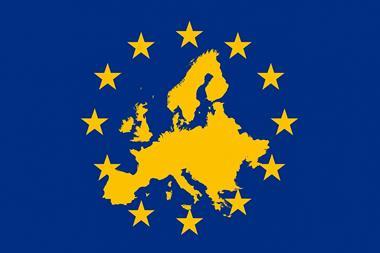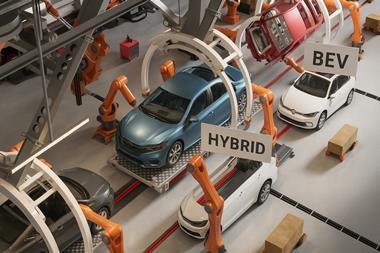
Following the lead of their automotive customers, fastening technology specialists are responding to industry demands to find innovation in weight, strength and performance
 As OEMs develop lightweight construction and optimised materials, the challenge for fastening specialists is to provide solutions as small, light and adaptable ideas without compromising on strength. Profil’s new RND Light system was developed to provide car makers not only with a fastening solution but also a process that saves on both cost and weight. The RND Light rivet nut combines the excellent performance of a standard rivet nut with the cost advantage of a pierce nut through optimised material use and reduced installation space.
As OEMs develop lightweight construction and optimised materials, the challenge for fastening specialists is to provide solutions as small, light and adaptable ideas without compromising on strength. Profil’s new RND Light system was developed to provide car makers not only with a fastening solution but also a process that saves on both cost and weight. The RND Light rivet nut combines the excellent performance of a standard rivet nut with the cost advantage of a pierce nut through optimised material use and reduced installation space.
Due to the integration of ribs on the riveting portion, it is possible to reduce its diameter and to carry the outstanding performance of the RND standard nut over to the RND Light. As less material is used, the RND Light achieves the cost level of pierce nuts and smaller package space.

Also, compared to pierce nuts, the RND Light has a significantly higher load capacity under dynamic loads.
In the development of RND Light, the static and dynamic properties were examined in a comprehensive series of tests. The RND Light was compared with standard rivet nuts, clinch nuts and weld nuts in different sheet thicknesses and sheet metals. Tests revealed that on torque values, pull out and push out forces and the results from the dynamic shear, RND Light exceeded requirements.
OEM applicationsThe first serial applications for the new rivet nut system were implemented at BMW and the VW Group and Jaguar Land Rover on their Aluminium intensive bodied vehicles. At all three companies, the rivet nut is the default connection element.
An essential component of the RND Light system is the associated processing equipment, such as sorting and conveyor equipment. Like other rivet nuts, they can be manually processed semi-automatically or fully automatically. In addition to standardised systems, Profil can provide customised solutions for use in the pressing plant.
Of paramount importance is reliability and availability of equipment. When the nuts are introduced in large presses at high hourly rates, reliability plays a crucial role.The most economical method during pressing of rivet nuts and other attached metallic fasteners is the automated processing in large and medium series. Here, the mechanical joining has the advantage of being able to integrate the operation inside the press tool. This results in a high process reliability and tight positional tolerances of the fasteners in the sheet metal part.
With automatic processing in progressive dies or transfer dies, the feeding units feed the fastening elements through installation heads permanently built into press dies and are mechanically installed into the sheet-metal through the piercing process. On each ram stroke, one or more fasteners are secured in the sheet metal and are assembly-ready.
However, the integration of the joining technology in the pressing process is complex. Here, Profil has the advantage in that it can provide as a system supplier the service and the development and processing expertise in addition to the fastener and the required automation technology.
OEMs don’t just have to consider a particular sheet-metal part but the entire assembly operation, including the other sheet-metal parts that might be affected
Servo presses OEMs such as BMW, Daimler and Audi already process the RND standard rivet nuts in mechanical transfer presses, achieving an increase in press shop productivity and a reduction in storage of finished and semi-finished parts. The new light RND rivet nuts can also be applied on modern servo presses.
Compared to the pierce nuts, rivet nuts with a smaller diameter and comparable weight can be used with a far greater range of sheet thicknesses. Whereas two differently-sized stamped nuts are required in widely differing thicknesses, RND Light can be used across a sheet thickness range of 0.5 to 3mm.
• The RND Light is an addition to the RND standard. It is offered from M6 to M12 with various properties
• The RND Light shows better performance in thin and sandwich material than the RND standard rivet nut
• RND light offers weight savings up to 50% and results in cost savings compared to RND standard rivet nut
• Due to the wide range of material thicknesses for RND Light, this product can replace pierce nuts as standard components
• Robust automatic installation solutions are available for press shop and bodyshop
Taking the door hinge as an example, vehicle designers are placing more functions into a fastener (centring, spacing, fixing, sealing functions etc). So while the prime function to fix one part to another is retained, the quantity of specialty fasteners adapted to the extra tasks is increasing.
Meanwhile, OEMs are trying to reduce assembly times but not reducing the number of fixing points on a car. Instead they are decreasing the number of screwing points. This simplifies assembly and reduces interval times but it does not reduce the number of fasteners.
In essence, OEMs don’t just have to consider a particular sheet metal part but the entire assembly operation and other sheet metal parts that might be affected.
Standard applicationsBMW, Ford, VW, Renault, GM, JLR, FCA, in fact nearly all volume production and premium marques carry Profil fasteners. Profil deals in a variety of distinct fastenings, offering options to customers who often prefer to be viewed as partners, rather than merely suppliers.
In one example, used on the dash panel, Profil developed a special type of bolt that went on to become the basis for a new fastener family – a centring bolt for a Renault Megane sheet-metal part. Profil also developed a hinge reinforcement, as a special fastener, for the Renault Scenic as well as a dash panel for Ford and others applications.
In another example, the development centred on the insulation of engine noise in a new light truck. A key element in this case was the sheet-metal material for the dash panel between the engine area and passenger compartment. The OEM used laminated steel, 1.23mm thick. The self-piercing bolts installed in the dash panel were also installed in 1.5mm aluminium material used for the cowl. Installation was completely automated, enabling high production volumes.








































